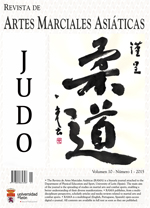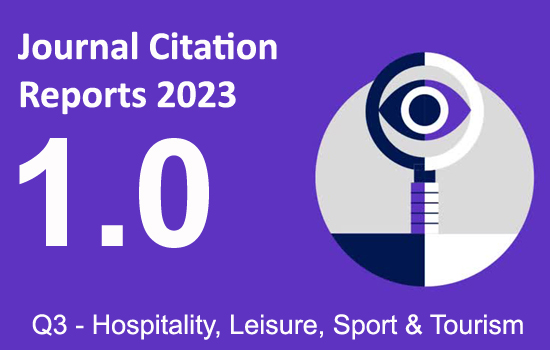Esgrima índia e persa: uma análise comparativa
DOI:
https://doi.org/10.18002/rama.v10i1.1499Palavras-chave:
Artes marciais, Índia, Pérsia, espada, cultura índia, cultura e língua persa, esgrima índia, esgrima persaResumo
A interconexão cultural entre o Irão e o norte da Índia, que existiu e se desenvolveu durante um vasto período, se conhece hoje em dia como “indo-ariano” ou “indo-persa”, que poderia aplicar-se à região, à cultura, à literatura, às armas e outros âmbitos de intervenção intercultural. A cooperação cultural entre estes dois países foi bilateral e foi marcada pelas rotas comerciais. Este artigo analisa a intercorrelação, similitudes e diferenças entre as culturas marciais e militares da Índia e da Pérsia. Mais precisamente, este artigo descreve o campo de formação individual nas habilidades militares, métodos para a sua aquisição e apreensão, assim como o uso das armas relacionadas com a dita formação. Para alcançar o objectivo, se levou a cabo uma análise comparativa baseada em fontes históricas e literatura contemporânea sobre o tema. Em primeiro lugar, descreve os princípios gerais e as tradições de armas e ambas as culturas. Esta parte revela algumas das técnicas de esgrima persa descritas nos manuscritos. A segunda parte descreve alguns aspectos da esgrima índia. Por último, se referem algumas similitudes e diferenças das técnicas de esgrima em ambas as tradições. Deve notar-se que existem muitos manuscritos persas sobre as técnicas de combate, mas não existem manuscritos Índios sobre a temática ou, então, não se encontrou até ao presente momento. Este artigo é apenas uma etapa inicial da Investigação.Downloads
Métricas alternativas
Referências
Ālam Ārāye Šāh Tahmāsp [World Ornamentation of King Tahmāsp] (1991). Zendegāni-ye Dāstāni-ye Dovomin Padešāh-e Doreye Safavi [The Narrative Biography of the Second Safa. Edited and Annotated by Iraj Afšār. Tehrān: Entešārāt-e Donyāye Ketāb.
Al-Jāmi, M. (2001). Tārix-e Ahmad Šāhi [History of Ahmad Šāh]. Edited and commented by P. S. Homāyun. Pašāvar: Dāneš Xaparanduye Tulne.
Al-Kāteb al-Rajāni, F. (2004). Samak Ayyār. Annotated by Seyyed Ali Šahāri. 2 Vols. Tehrān: Sedāy-e Moāser.
Asadi Tusi, H. (1938). Garšāsbnāme [Letter of Garšāb]. Annotated by H. Yaqmā'i. Tehrān: Ketābforuši va Čāpxāne-ye Baruxim.
Āsef, M. H. (2003). Rostam al Tavārix: Salatin-e Selseleye Safaviye, Afšāriye, Zandiye va Qājāriye [Rostam al Tavārix: The Sultans of Safavid, Afšārid, Zand and Qājār]. Annotated by A. Alizādeh. Tehrān: Entešārāt-e Ferdos.
Ayeen Akbery [The Institutes of the Emperor Akber]. (1800). Translated by F. Gladwin, Vol. 1, London: O. Avld, Greville Street.
Bahari, E. (1996) Bihzad: Master of Persian Painting. London & New York: I. B. Tauris Publishers.
Beyhaqi Dabir, A. (2004). Tārix-e Beyhaqi [The Historyof Beyhaqi]. Annotated by A. Fayyāz. Mašhad: Danešgāh-e Ferdŏsi Mašhad.
Beyqami, M. M. (2002). Dārābnāme [Book of Dārāb]. Corrected and Annotated by Z. Safā. 2 Vols. Tehrān: Šerkat-e Entešārāt-e Elmi va Farhangi.
Blake, S. P. (2002). Shahjahanabad: The Sovereign City in Mughal India 1639-1739. Cambridge: Cambridge University Press.
Bosworth, C. E. (2004). The new Islamic Dynasties: A Chronological and Genealogical Manual. (2nd Ed.) Edinburgh: Edinburgh University Press.
Chardin, J. (1988). Travels in Persia 1673-1677. New York: Dover Publications.
Dāstān-e Hosseyn Kord-e Šabestari [The Story of Hosseyn Kord-e Šabestari] (2003). Annotated by A. Šabgāhi Šabestari. Tehrān: Mo'aseseye Entešārāt-e Farahāni.
Dehxodā, A. A. (2006). Digital Lexicon of Dehxodā . Tehran: University Press..
Egerton, W. (1896). Indian and Oriental Arms and Armour. London: W. H. Allen & Co.
Falsafi, N. (1996). Zendegāni-ye Šāh Abbās [The Biography of Šāh Abbās]. 5 Vols. Tehrān: Čāpxāne-ye Mahārat.
Farquhar, J. N. (1925). The Fighting Ascetics of India, Bulletin of the John Rylands Library, 9, 431-452.
Ferdŏsi, H. A. (2005). Šāhnāme Ferdŏsi (bar Asās-e Nosxeye Mašhur-ebe Čāp-pe Mosko) [Book of Kings byFerdŏsi (Based on the Manuscript Known as Published in Moscow)]. Tehrān: Entešārāt-e Alam.
Frye, R. N. (1989). The Golden Age of Persia. London: Butler & Tanner Ltd.
Hakim, M. (Unspecified date). Koliyāt-e Haft Jeldi Eskandarnāme: Sāhebqarān Zowalqareneyn Eskandar ben Dārāb ben Bahman ben Esfandiyār Ru'intan [The Complete Seven Volumes of the Book of Alexander: Sāhebqarān Zowalgareneyn Alexander, the Son of Dārāb, the Son of Bahman, the Son of the Invulnerable Esfandiyār]. From the Series of Legends of Oriental Pahlavān. Tehrān: Entešārāt-e Mohammad Hasan Sar Elmi.
Heber, R. (1843). Narrative of a Journey Through the Upper Provinces of India in 1824-5. Vol. II. London: John Murray.
Irvine, W. (1903). The Army of the Indian Moghuls. London: Luzac & Co.
Kāšefi Sabzevāri, M. (1971). Fotovvatnāme-ye Soltāni [Royal Book/Letter of Chivalry]. Commented by Mohammad Ja’far Mahjub. Tehrān: Entešārāt- Bonyād-e Farhang-e Irān.
Khorasani, M. M. (2006). Arms and Armor from Iran: The Bronze Age to the End of the Qajar Period. Tübingen: Legat Verlag.
Khorasani, M. M. (2009a). Las técnicas de la esgrima persa. Revista de Artes Marciales Asiáticas, 4(1), 20–49.
Khorasani, M. M. (2009b). El combate con armas blancas cortas en la esgrima persa. Revista de Artes Marciales Asiáticas, 4(2), 38– 53.
Khorasani, M. M. (2010a). Lexicon of Arms and Armor from Iran. A Study of Symbols and Terminology. Tübingen: Legat Verlag.
Khorasani, M. M. (2010b). La lucha: una parte integral de las artes marciales de combate en Irán. Revista de Artes Marciales Asiáticas, 5(2), 64–76.
Khorasani, M.M. (2013). Persian Archery and Swordsmanship: Historical Martial Arts of Iran. Frankfurt am Main: Niloufar Books.
Kinsley, D. A. (2012). British Sword Fighting. Self Publication (Standard Copyright License).
Kolff, D. H. A. (2002). Naukar, Rajput, and Sepoy. The Ethnohistory of the Military Labour Market of Hindustan, 1450-1850. Cambridge: Cambridge University Press.
Kurochkin, A. Y. (2014). Курочкин А.Ю., «Холодное оружие в традиционной воинской подготовке в Индии в 1500-1800 годах». Война и оружие. Новые исследования и материалы. Труды Пятой Международной научно-практической конференции. 14-16 мая 2014 года, часть II, 478-488, ВИМАИВиВС, Санкт-Петербург, 2014 (Kurochkin A. “Cold weapons in traditional military practices in North India duering 1500-1800”. “Warfare and weapons. New researches and materials”. Materials of 5th International Science-practical conference. 14-16th May 2014, part II, 478-488, Military-Historical Museum of Artillery, Engineer and Signal Corps, Russia, St. Petersburg).
Luijendijk, D. H. (2006). Zoor Khane: History and Techniques of the Ancient Martial Arts of Iran. Boulder: Paladin Press.
Marshall, D. N. (1985). Mughals in India: A Bibliographical Survey of Manuscripts. London: Mansell Publishing.
Mobārak Šāh Faxr-e Modabbar, M. (1967). Ādāb al-Harb va al-Šojā-e [The Customs of War and Bravery]. Annotated by A. Xānsāri. Tehrān: Eqbāl.
Modarresi, Y., Sāmei, H., & Safavi Mobarhen, Z. (1991). Farhang-e Estelāhāt-e 29) Doreye Qājār: Qošun va Nazmiye [The Lexicon of the Expressions of the QājārPeriod: Army and Military]. Tehrān: Daftar-e Pajuhešhāye Farhangi.
Mohammad Qāsim, H. Sh. (1910). History Rise of the Mahomedan Power in India till the Year A.D. 1612. Vol. III. Translated by J. Briggs. London: Kegan Paul, Trench, Trubner & Co.
Mostufi, H. (1999). Zafarnāme be Enzemām-e Šāhnāme Abolqāsem Ferdŏsi [Book of Victories together with Book of Kings Abolqāsem Ferdŏsi]. With an Introduction by Dr. Nostratollāh Rastegār. Tehrān: Markaz-e Našr-e Dānešgāhi.
Munday, G. C. (1832). Pen and Pencil Sketches. Being the Journal of a Tour in India. Vol. II. London: John Murray.
Nāderi, A. (1968). Zafarnāme [Book of Victories]. Introduction by M. Farrox. Tehrān: Entešārāt-e Ketābxāne-ye Melli-ye Mālek.
Nitin, S. (2008). Mobility, Control and Criminality in Early Colonial India, 1760s–1850s. The Indian Economic and Social History Review, 45(1), 1–33
Nur-ud-din Mohammad Salim (1909). Tuzuk-i-Jahangiri or Memoirs of Jahangir. Translated by A. Rogers. London: London Royal Asiatic Society.
Pinch, W. R. (2006). Warrior Ascetic and Indian Empires. Cambridge: Cambridge University Press.
Rašidoldin Fazlollāh Hamedāni, A. (1985). Jāme–al Tavārix (Az Aqāz Peydayeš Moqol Ta Pāyān Doreye TeymurQā’ān) [The Complete History (From the Emergence of the Mongols until the End of the Era of Timur)] Written in 703 Hegira (1304 C.E.). Annotated by B. Karimi. Tehrān: Entešarat Eqbāl.
Rawson, P. S. (1967). The Indian Sword. Copenhagen: Danish Arms and Armour Society.
Romuz-e Hamze [Secrets of Hamze] (1940). Anonymous Author. Handwritten by Mohammad Ali Nāme. Tehrān: Šerkat-e Tab-e Ketāb.
Sabā, F. Šahanšahnāme [Book of King of Kings]. Undated and Handwritten Manuscript. Mašhad: Āstān-e Qods-e Razavi.
Šabānkāre’i, M. (2002). Majma’ al-Ansāb (Nimeye Avval) [Complete Collection of Peoples (First Part)]. Commented by Mir Hāšem Mohaddes. Tehrān: Entešārāt-e Amir Kabir.
Sharar, A. H. (1994). Lucknow, the Last Phase of an Oriental Culture. Oxford: Oxford University Press.
Širuye Nāmdār [The Famed Širu] (2005). Anonymous Author. Tehrān: Entešārāt-e Qoqnos.
Spilsbury, J. (2008). The Indian Mutiny. London: Orion Publishing Co.
Sprenger, A. (1896). Report of the Researches into the Muhammadan Libraries of Lucknow. Calcutta: Office of the Superintendent of Government Printing.
Stevenson, W. F. (1898). Wounds in War. New York: W. Wood & Company.
Tartusi, A. T. (2001). Abu Moslemnāme [Book of Abu Moslem]. Annotated by H. Esmā'ili. 4 Vols. Tehrān: Entešārāt-e Moi’n, Našr-e Qatre, Anjoman-e Irānšenāsi dar Irān.
Thomson, N. D. (1893). The curved sword in the native cavalry. Journal of United Service Institution of India, XXII, 102.
Xusofi Birjandi, H. (2002). Xāvarānnāme [Book of the East]. With an Introduction by S. Anvari. Tehrān: Sāzmān-e Čāp va Entešārāt.
Yazdi, M. Š. (1957). Zafarnāme (Tārix-e Umumi-ye Irān dar Doreye Teymuriyān) [Book of Victory (The General History of Iran during Timurid Period)]. Corrected and Annotated by Mohammad Abbāsi. Tehrān: Amir Kabir.
Downloads
Publicado
Como Citar
Edição
Secção
Licença
Direitos de Autor (c) 2015 Aleksey Kurochkin, Manouchehr Moshtagh Khorasani

Este trabalho encontra-se publicado com a Licença Internacional Creative Commons Atribuição-NãoComercial-CompartilhaIgual 4.0.
Os autores que publicam nesta Revista estão de acordo com os seguintes termos:
- Os autores cedem, de forma exclusiva, os direitos de exploração (reprodução, distribuição, comunicação pública, transformação) à Universidade de Léon, podendo estabelecer, em separado, acordos adicionais para a distribuição não exclusiva da versão do artigo publicado na Revista (por exemplo: alojar no repertório institucional ou publicá-lo num livro), com o reconhecimento da publicação inicial nesta Revista.
- O trabalho encontra-se na Creative Commons Attribution-Non Commercial-Share Alike 4.0 International License. Pode-se consultar aqui o resumo e o texto legal da licença.
- Permite-se, e sugere-se, que os autores difundam electronicamente as versões pré-impressão (versão antes de ser avaliada) e pós-impressão (versão avaliada e aceite para publicação das suas obras antes da sua publicação), favorecendo a sua circulação e difusão, e com ela o possível aumento da sua citação e alcance pela comunidade académica.











